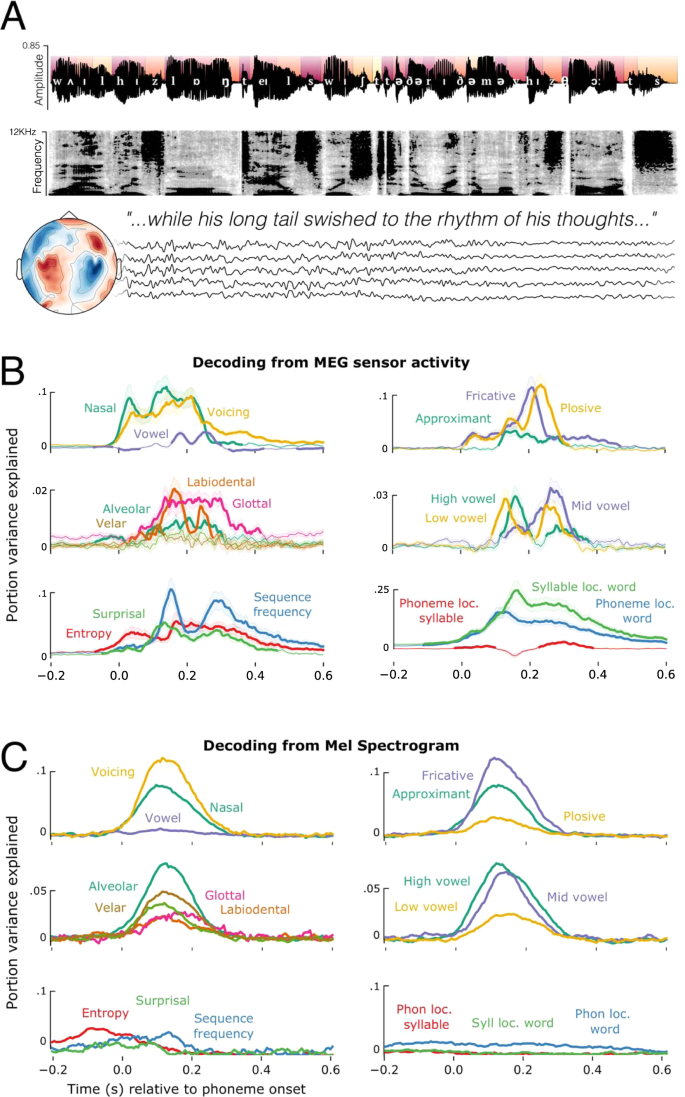私たちの脳は、聞いた言葉を処理するために音を「タイムスタンプ」しています。Our Brains “Time-Stamp” Sounds to Process the Words We Hear
2022-11-07 ニューヨーク大学 (NYU)
個々の音の処理における脳の役割はよく研究されていますが、音声を構成する高速の聴覚的シーケンスをどのように管理しているかについては、分かっていないことがたくさんある。
研究では、脳が音声の同一性と順序をどのように処理しているのかを明らかにすることを目的としている。なぜなら、脳は、発話された単語(例えば、「メロン」ではなく「レモン」)を正しく認識するために、音声の同一性(例えば、l-e-m-o-n)と発話された順序(例えば、1-2-3-4-5)の両方を正確に解釈する必要があるため。
そこで研究チームは、英語を母国語とする20人以上の被験者が2時間のオーディオブックを聴きながら、脳活動を記録した。具体的には、被験者の脳活動を、ある音と別の音を区別する音声の特性(例えば、「m」と「n」)と関連づけた。
その結果、脳はバッファーを用いて音声を処理することで、過去3回の音声の時間的な変化を記録していることが分かった。また、聴覚野の神経細胞間で情報を受け渡すことで、複数の音声を混同することなく同時に処理していることも明らかにした。
<関連情報>
- https://www.nyu.edu/about/news-publications/news/2022/november/our-brains–time-stamp–sounds-to-process-the-words-we-hear.html
- https://www.nature.com/articles/s41467-022-34326-1
音素列の神経ダイナミクスから、内容と順序を表す位置不変のコードが明らかになる Neural dynamics of phoneme sequences reveal position-invariant code for content and order
Laura Gwilliams,Jean-Remi King,Alec Marantz &David Poeppel
Nature Communications Published:03 November 2022
DOI:https://doi.org/10.1038/s41467-022-34326-1

Abstract
Speech consists of a continuously-varying acoustic signal. Yet human listeners experience it as sequences of discrete speech sounds, which are used to recognise discrete words. To examine how the human brain appropriately sequences the speech signal, we recorded two-hour magnetoencephalograms from 21 participants listening to short narratives. Our analyses show that the brain continuously encodes the three most recently heard speech sounds in parallel, and maintains this information long past its dissipation from the sensory input. Each speech sound representation evolves over time, jointly encoding both its phonetic features and the amount of time elapsed since onset. As a result, this dynamic neural pattern encodes both the relative order and phonetic content of the speech sequence. These representations are active earlier when phonemes are more predictable, and are sustained longer when lexical identity is uncertain. Our results show how phonetic sequences in natural speech are represented at the level of populations of neurons, providing insight into what intermediary representations exist between the sensory input and sub-lexical units. The flexibility in the dynamics of these representations paves the way for further understanding of how such sequences may be used to interface with higher order structure such as lexical identity.


